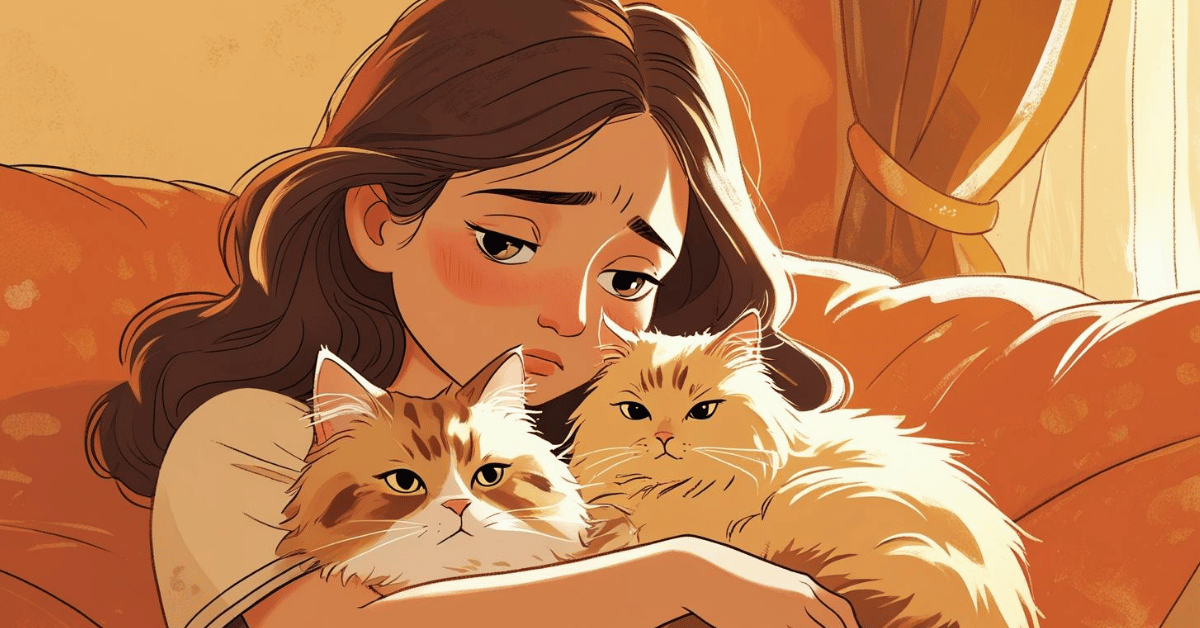Cats may be known for their independence, but any cat owner who has ever shed tears knows these pets often show remarkable empathy. Whether curling up beside you or softly purring at your feet, cats seem to know when something is wrong.
The Science of Feline Sensitivity
Cats don’t express emotions in the same way humans do, but research suggests they can recognize and respond to changes in human behavior and mood.
Reading Human Body Language
Cats rely heavily on observation. They notice when owners move slowly, speak softly, or exhibit withdrawn body language — all indicators of sadness.
Sensitivity to Vocal Changes
Beyond body language, cats respond to tone of voice. A sad or shaky voice may cause a cat to approach more cautiously, while a calm voice reassures them.
Do Cats Really Understand Sadness?
While cats may not grasp sadness in the way humans conceptualize it, they do notice changes in behavior and energy.
Mirroring Human Energy
When you’re sad and less active, your cat may also become calmer. This mirroring behavior helps maintain harmony between pet and owner.
Offering Comfort
Many owners report that cats sit close, purr loudly, or rub against them during low moments. These comforting behaviours suggest that cats perceive distress and attempt to provide reassurance.
Related Posts
- Why Your Cat Follows You Everywhere
- Why Do Cats Meow at Night?
- Why Does My Cat Scratch the Furniture?
- Why Do Cats Sit on Laptops and Books?
Common Cat Behaviours Around Sad Owners
When owners are sad, cats may exhibit a range of specific behaviors.
Increased Affection
Cats may choose to cuddle more than usual, rest their head against you, or sit directly on your lap. This closeness may serve both as comfort for you and security for them.
Quiet Companionship
Not all cats are overtly affectionate. Some may simply stay near their owners, offering silent support. This presence alone often provides comfort.
Why Cats React Differently to Sadness
Not every cat responds to sadness in the same way. Their reactions depend on personality, upbringing, and environment.
Empathetic Cats
Some cats are naturally attuned to human emotions. These felines quickly adjust their behavior to provide reassurance.
Independent Cats
Other cats may not react as noticeably. This doesn’t mean they don’t sense sadness — they may simply prefer to give space rather than offer physical closeness.
Scientific Insights into Cat-Human Bonds
While much of the evidence is anecdotal, scientific studies increasingly suggest that cats form deep emotional bonds with their owners.
Attachment Similar to Children
Research from Oregon State University found that cats can form secure attachments to their humans, much like children do with parents. This explains why cats often seek proximity when their owners are distressed.
Stress Reduction Through Cats
Studies also show that the sound of a cat’s purr has calming effects, reducing stress and lowering blood pressure. This mutual benefit strengthens the bond between humans and cats. For additional insights, see Psychology Today’s article on pets and emotional support.
How Cats Comfort Us During Sadness
Cats provide comfort not just through presence, but through instinctive actions that soothe.
Purring as Healing
A cat’s purr vibrates at frequencies between 25–150 Hz, which some studies suggest may promote healing and relaxation. This may be why cats instinctively purr near sad or sick owners.
Physical Contact
From kneading with their paws to curling against your side, physical touch provides reassurance — both for the cat and the human.
Helping Cats Feel Secure Too
While cats can sense sadness, they also rely on stability from their humans. If sadness leads to major behavioral changes, cats may feel anxious.
Maintaining Routine
Sticking to regular feeding, play, and grooming routines reassures your cat, even during difficult times.
Offering Reassurance Back
Spending time petting or playing with your cat not only lifts your mood but helps them feel secure when your energy shifts.
Linking Emotional Awareness to Broader Feline Sensitivity
Cats’ ability to sense sadness ties into their wider emotional awareness. They also respond to anxiety, depression, and even fear in their humans. This sensitivity is part of the reason many people view cats as intuitive companions.
FAQs About Cats and Sadness
Do cats know when you’re crying?
Yes, many cats notice when their owners cry. They may react by approaching, sitting close, or purring as a form of comfort.
Why does my cat stay close when I’m sad?
Cats sense changes in body language and energy. Staying close may be their way of offering support or reassurance.
Can cats cheer you up when you’re feeling low?
Absolutely. The presence of a cat, combined with purring and physical touch, can help reduce stress and lift mood.
Do all cats respond to sadness the same way?
No, responses vary depending on personality. Some cats are highly affectionate, while others prefer to give their owners space.
Can cats sense other emotions besides sadness?
Yes, cats are sensitive to multiple emotions, including anxiety, fear, and even happiness. Their reactions differ based on the situation.

